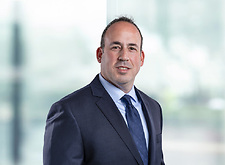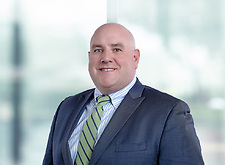Major Overhaul of Large-Scale Renewable Energy Project Permitting Included in New York State Budget Bill
New York’s 2020 budget bill will contain the most significant overhaul of large-scale renewable energy project permitting since the enactment of Public Service Law Article 10. Building on Governor Andrew Cuomo’s proposal, the “Accelerated Renewable Energy Growth and Community Benefit Act” (the “Act”) will effectively dismantle the State’s much-maligned Article 10 process, which required electricity generation projects 25 megawatts (“MWs”) and larger to make their way through a multi-staged and multi-year permitting process before the New York State Board on Electric Generation Siting and the Environment (“Siting Board”).
The Act, which takes effect immediately upon passage and execution, represents a major step toward achieving the goals set forth in the Climate Leadership and Community Protection Act (“CLCPA”). These goals include having a minimum of 70% statewide electricity consumption come from renewable sources by 2030, and an emission-free grid by 2040. Advocacy groups, including the Alliance for Clean Energy – New York (“ACE-NY”) and the New York League of Conservation Voters, worked hard to get the bill passed, which was not without opposition from many upstate local governments and other parties.
Under the Act, large-scale renewable energy projects will now apply to a streamlined permitting regime overseen by a newly-created Office of Renewable Energy Siting (“ORES” or the “Office”) and its Executive Director. The Governor originally proposed ORES to be in New York’s Department of Economic Development, but the final bill places it within the Department of State. Accordingly, the law is no longer codified in “Article 23” of the State’s Economic Development Law but instead in Section 94-c of the Executive Law.
Other material modifications from the Governor’s February 20, 2020 proposal include:
- A one-year deadline for ORES to promulgate regulations and establish a set of unified standards and conditions for designing, engineering and operating major renewable energy facilities;
- Projects 20 to 25 MWs in size, currently subject to local zoning and State Environmental Quality Review Act (SEQRA) process, may opt in to the Section 94-c permitting process (rather than the 10 to 25 MW originally proposed); and,
- Third-party intervenor funding remains available, but no pre-application funds are required.
Notably, the Act does NOT require municipalities and industrial development agencies (IDAs) to consult with the New York State Energy Research and Development Authority (“NYSERDA”) in setting payment in lieu of taxes (“PILOT”) amounts, nor does it set a real property value assessment methodology for solar and wind projects, both of which were components of the Governor’s original proposal. The sixty day notice period under RPTL § 487(9)(a) during which municipalities must request a Payment-in-lieu-of-tax(PILOT) agreement, which the Governor proposed to delete, remains in the law.
I. ORES and its Executive Director:
The Act establishes the ORES, headed by an executive director and situated within in New York’s Department of State. ORES is charged with “accepting applications and evaluating, issuing, amending, approving the assignment and/or transfer of siting permits” for all major renewable energy facilities. Such facilities include all renewable generation and co-located energy storage facilities that are 25 MWs or more. Projects with nameplate capacity between 20 and 25 MWac, currently subject to the local zoning and SEQRA process, may opt-in. Like Article 10, Section 94-c does not cover standalone energy storage projects.
The new Section 94-c requires the Office to promulgate rules necessary to implement the siting permit program within one year. Until the Office establishes uniform standards and conditions, an application under Section 94-c would be required to conform substantially to the form of an Article 10 application.
The Act creates a centralized, uniform permitting regime for large-scale renewable energy generation facilities. No other state agency, department, authority, or municipality may require any approval or condition on a major renewable energy project, provided that a municipality has been given notice.
In terms of staffing, the statute directs that employees of other state agencies who may be substantially engaged in the Office’s performance will be transferred to Office. Such employees will retain their respective civil service classifications. This should help accelerate the pace at which the ORES can be up and running.
Importantly, the Executive Director or his or her designee, individually, may administer all proceedings and hearings of the ORES; this casts aside what was sometimes the unwieldy and time-consuming process of identifying, convening a quorum of, and preparing the members of the Article 10 Siting Board.
ORES will consult with NYSERDA, the Department of Environmental Consultation (“DEC”), the Department of Public Service (“DPS”), the Department of Agriculture & Markets, and any other relevant state agencies and authorities with subject matter expertise to set uniform permitting standards and conditions. These standards and conditions will be designed to avoid or minimize, to the maximum extent possible, any potential significant adverse environmental impacts, and will apply to the environmental impacts ORES determines are common to each type of major renewable energy facility. Before the uniform standards and conditions are adopted, ORES must hold four public hearings in different regions of the state to receive comments from the public and the municipalities.
In its review of a specific Section 94-c permit, ORES, in consultation with DEC, will determine if any site-specific mitigation is required to avoid or mitigate site-specific environmental impacts that cannot be addressed by the uniform standards or conditions. Site-specific permit terms and conditions will take into account the CLCPA targets and the environmental benefits of the proposed major renewable energy facility, and off-site mitigation may be allowed. Site-specific permit terms for certain projects may include a payment to the newly-created Endangered or Threatened Species Bank Fund in lieu of physical mitigation. The DEC may use the monies in that fund to “facilitate a net conservation benefit to endangered and threatened species potentially impacted by a major renewable energy facility.”
The Office also will administer amendments and transfers of Section 94-c permits. The law provides that an amendment initiated by the office or permittee that is likely to result in any material increase in any environmental impact or involves a substantial change to the terms or conditions of a siting permit will comply with the public notice and hearing requirements of this section, but leaves open that less substantial amendments may be dealt with in a more streamlined manner.
Projects that have already filed their Public Involvement Program plans under Article 10 may stay in Article 10 process or opt in to Section 94-c. A complete Article 10 application will be deemed complete for purposes of Section 94-c.
II. Section 94-c’s Permitting Procedure & Timeline
A primary change is that Section 94-c significantly streamlines the process compared to Article 10. To begin with, Article 10’s Public Improvement Plan and Preliminary Scoping Statement need not be filed, shortening the pre-application permitting timeline by 240 days.
ORES must determine that an application is complete within sixty days, and the developer must submit proof that it consulted with the local municipalities about the procedural and substantive requirements of any applicable local law. Applicants also may consent to an extension of the sixty-day time period for determining application completeness.
Within sixty days after the Section 94-c application is deemed complete, ORES will publish draft permitting conditions for public comment. Members of the public as well as municipalities have sixty days to respond. If public comments, including comments from a municipality, raise a “substantive and significant issue,” then ORES must proceed to an adjudicatory hearing to hear arguments and consider evidence. The Act does not change existing law on what constitutes a substantive and significant issue,
Municipalities who receive notice of a Section 94-c application “shall” submit a statement to ORES indicating whether the project complies with local law. If the municipality states that the project does not comply, and ORES decides not to hold an adjudicatory hearing, then the Department of State must hold a public statement hearing in the affected municipality. The Act does not address what occurs if a municipality refuses to submit a statement.
An especially notable change is the default approval mechanism in the Act. After the public comment hearing has closed, the ORES must make a final determination within one year of an application being deemed complete, and within six months if the project is sited on “existing or abandoned commercial use,” including brownfields, landfills, dormant electric generating stations, and abandoned properties. If ORES fails to meet this deadline, a permit will automatically issue and all uniform conditions or site specific permit conditions will be enforceable so long as they were issued for public comment.
Furthermore, all final permits will require the permittee to provide a host community benefit. Permittees and host communities can agree to the type of benefit that will be provided, or ORES or the PSC can determine the type of project that would benefit the community.
III. Judicial Review
Parties challenging the grant of a permit may seek judicial review by filing a petition in the Appellate Division where the project is proposed to be located within 90 days after ORES issues its final decision. The scope of appellate division review will be limited to whether the Office’s decision are:
(A) in conformity with the constitution, laws and regulations of the state and the United States;
(B) supported by substantial evidence in the record and matters of judicial notice properly considered and applied in the opinion;
(C) within the office's statutory jurisdiction or authority;
(D) made in accordance with procedures set forth in this section or established by rule or regulation pursuant to this section;
(E) arbitrary, capricious or an abuse of discretion; or
(F) made pursuant to a process that afforded meaningful involvement of citizens affected by the facility regardless of age, race, color, national origin and income.
Any rules for appeals not addressed in Section 94-c will be subject to Article 78 requirements for appeals of agency decisions.
IV. Fees
Section 94-c applicants must pay $1000/MW fee into a NYSERDA-administered local agency account for the participation of municipalities and community intervenors in public comment periods or hearing procedures. ORES will disburse these funds pursuant to its yet-to-be promulgated regulations, but the statute requires that fees be disbursed for municipalities to determine local law compliance – as the law requires municipalities to submit such a statement. Article 10 and 7 intervenor funds already paid will be credited to the NYSERDA-administered local agency account under Section 94-c.
To fund its activities, the law provides that ORES may establish regulations to collect an additional fee to recover costs related to reviewing and processing applications.
V. Local Law Compliance and the “Unreasonably Burdensome” Standard
Like the Article 10’s Siting Board, ORES may issue a Section 94-c permit only if it finds that the project would comply with applicable laws and regulations. However, ORES, may elect not to apply, in whole or in part, any local law or ordinance which would otherwise be applicable if it makes a finding that, as applied to the proposed major renewable energy facility, it is unreasonably burdensome in view of the CLCPA targets and the environmental benefits of the proposed major renewable energy facility.
This differs significantly from Article 10’s “unreasonably burdensome” standard, which is judged “in view of the existing technology or the needs of or costs to ratepayers whether located inside is or outside of such municipality.” The Act thus gives ORES significantly more flexibility to choose not to apply a local law and changes the applicable standard to one that expressly promotes consideration of progress toward the State’s CLCPA’s goals and the specific environmental benefits (as opposed to all impacts) of the project over the local values embedded in the local laws.
VI. The Act’s Other Renewable Energy Provisions
In addition to Section 94-c, the Act amends NYSERDA’s authorizing statute to give it the authority to establish build-ready renewable energy project sites at locations that are “difficult to develop,” including performing site assessment, negotiating for rights and interests to facilitate the transfer of the site, securing permits, and other activities.
It also amends Article 7 of the Public Service Law to create an expedited permitting process for major electric transmission facilities, and requires DPS to perform a broad-ranging power grid study in furtherance of the CLCPA’s goals.
Please stay tuned to the Hodgson Russ Renewable Energy Practice for more alerts on these provisions in the coming weeks.
To learn more about the Accelerated Renewable Energy Growth and Community Benefit Act and how it may affect your business, please contact a member of Hodgson Russ’s Renewable Energy Practice.
Featured
- Partner
- Partner
- Partner
- Partner
- Partner
- Partner
- Partner
- Senior Associate
- Partner
- Partner
- Co-Chair of the Firm, Partner
- Partner












